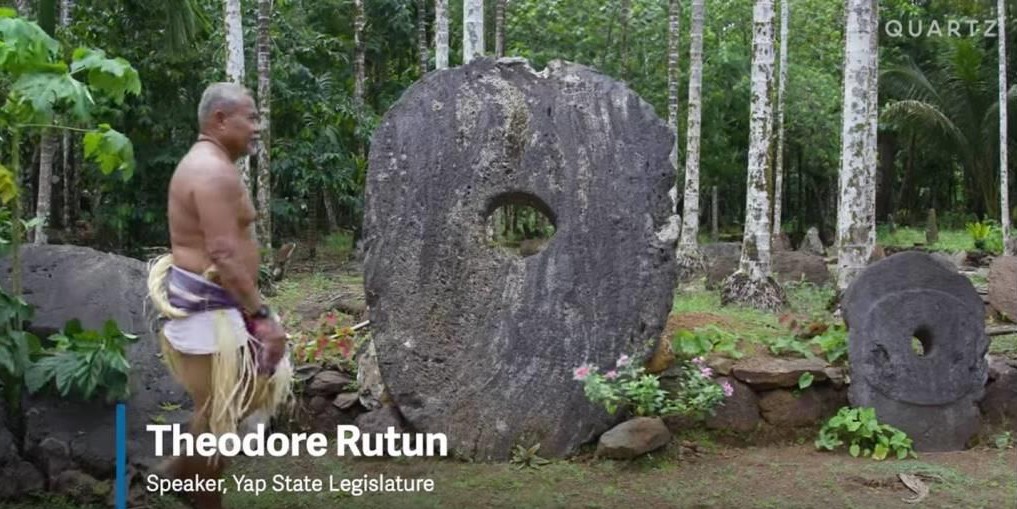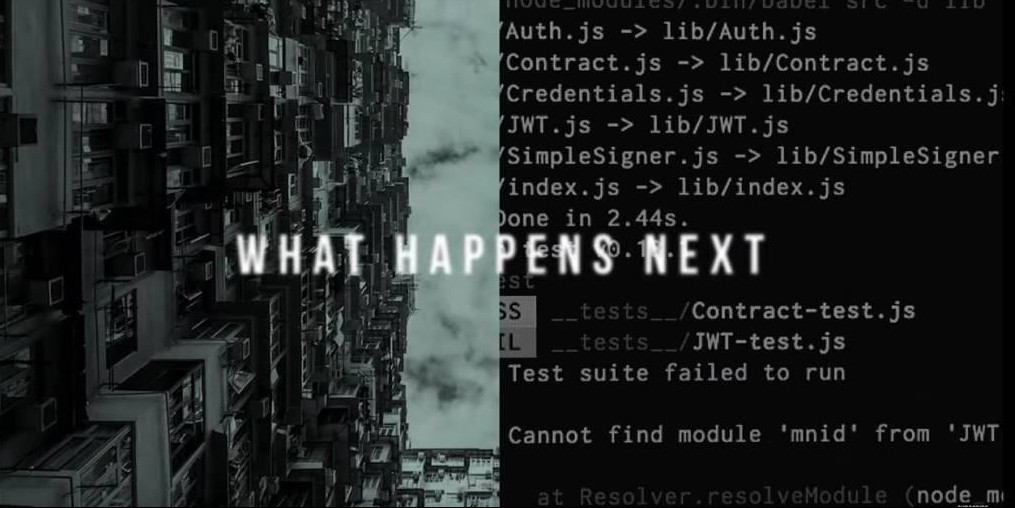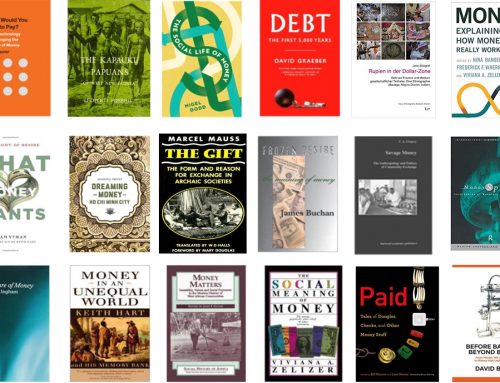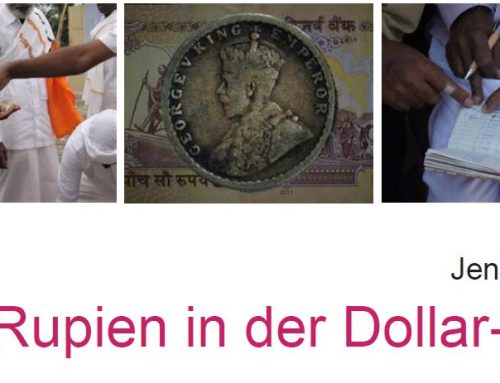Back into the future: bitcoins, blockchains and stone-money
“The future of money – the great sweep of historical change – we intend to instigate, but we haven’t seen the revolution yet” (David Birch). This beautiful video by the quartz news outlet reflects the connection of money, identity, oral history, blockchains and communal memory. Pointing out the challenge of automated intelligence vs. human virtues the video compares bitcoins with the ancient stone money of Yap (an island of the western Pacific Ocean). Yet, the neat analogy which they draw made me think about the difference of valuing truth vs. valuing stories.
In essence, here is what some of the newest and some of the most ancient currencies in the world may have in common (now quoting from the video):
“Money is a communal story about who owns what [..]. Yap’s ancient system and the digital dollars in your bank work because what you have is connected to who you are […] but there is a big difference – one that could make Yap’s money a model for the future: Yap Islanders remembered who owned the stones without any intermediary like a bank or a government or a company to keep track of things. […] The more people who know, the more secure it is […]. In some sense bitcoin is a return to this earlier concept of communal record keeping … of communal memory”
It’s certainly worth thinking about such a connection yet we might also learn from thinking about the differences…
The blockchains of communal memory: valuing truth or valuing stories?
The (long) move from stone money to bitcoins is a move from oral tradition through script to technological (or automated) memory. And herein lies the crucial difference: Contrary to oral tradition, the blockchain as such does not provide us with human virtues, with morals and ethics. Rather it is witnessing without judgement! – so far at least.
—
Some (additional) background: the stone money of Yap
The island of Yap is famous for its ancient monetary system which is based on giant circular stone disks carved out of limestone (called “Rai”). Yap Islanders used to import these discs with their canoes from other islands far away – a long and dangerous journey. Up to the present day each stone disk has its own story, telling how it was produced, obtained and transacted, and who ever possessed it. Importantly, this story is what makes up the value of each single piece. It is story-telling which keeps the currency valid and in circulation even though the objects themselves need not be moved. Stone discs are displayed in rows in front of houses, near sacred places and along footpaths, roads and territorial boarders. Some are also lost in the ocean or deeply hidden in the forest. But none is ever forgotten. All are family keepsakes and inalienable in some sense. Once stone discs have been put up in one place, they are hardly ever moved again. Nevertheless, no matter where they are located, they can be transacted like money, mostly as compensation for land, death or in marital alliance. In order to transact it is enough to make a transaction publicly known. Henceforth collective memory keeps track with every change of ownership. In principle every member of the community knows to whom each stone belongs, to whom it belonged before, how many times it had been exchanged, and where it came from. Stone disks are still a valid currency on Yap while each stone has its own story and each stone describes a part of the connections between all the members of the community.
It seems indeed a bit like a blockchain. However, when it comes to the following comparisons of stone-money and bitcoins, this may be of outright importance: The ancient money of Yap is what may be called a “social currency” [1] – a money whose main idea is neither equality nor the exchange of commodities but to create, recreate and remember social relations.
—
Bitcoin: A system where “trust” is replaced by “truth” which money represents
What the bitcoin-whitepaper of 2008 pointed out and what enthusiasts are not getting tired to repeat is that blockchains have the revolutionary potential to replace social institutions which establish “trust” with a decentralized and automated mechanism of establishing consensus about “truth.” That’s great because it reduces transaction costs and makes the financial intermediators obsolete. It is achieved – in principle at least – by open access, complete decentralization and a very particular form of communal memory.
In this system truth is established by consensus. Yet, in the peculiar form that bitcoins lend to communal memory, consensus is immediately represented in the creation of money itself. Each new block of bitcoin transactions is confirmed in a competition of miners who try to solve a mathematical problem in which all transactions of the block are encoded. The first who solves the problem submits the so-called “proof of work” and therefore she is rewarded with “value” in the form of a number (or share) of brand-new bitcoins. Before that, however, a majority of all other miners need to agree that the proof of work has been correct – meaning that they need to come up with the same solution. This works not because miners trust each other, but because all take part in the same competition; because all have access to the same data; and because they interact within the same infrastructure of value which they collectively sustain through their active memerbership (this however still includes rules and adjustments to which members agree in more conventional forms of conversation). Not trust, but established truth is what generates value which is subsequently represented in the winner’s reward (i.e. in the output of new coins). Staying within this system one might eventually say that money itself has come to represent truth.
—
Stone-money: A system where value rests on trust in tales which money represents
As I indicated in the beginning Yap’s ancient stone-money is a social currency. Moreover, it is crucial to understand that while stone-discs are a valid means of exchange (particular exchanges, however), they are incommensurate to each other since value rests on each stone-disc’s individual tale.
The story may specify, for example, how dangerous the journey of a particular stone disc was until it reached the island; who the people were who brought the stone disc; whom or what they encountered on their way, and how they reacted; how the stone disc changed ownership in the course of centuries; who theses owners were; what kinds of motivations they had; what kind of relations each transaction reflected; and how there was each time something of the previous owner’s personality preserved in what contributed to the unique value of each particular object.[2] Needless to say that any new owner and any witness or commentator may have an interest in manipulating and modifying the story – how it was and how it continues.
Indeed Yap islanders, too, reach consensus about ownership by means of making transactions publicly known. But in their case it also means to make transactions and memory subject to a continued social practice of narration. Collective memory may share a certain mainline of a story which could be referred to as truth established by consensus. Crucially, however, valuing stone-money means trusting in tales that not only narrate in much richer detail but are likely to be told and re-told with many variations and interpretations. Here, value is not a question of truth stored in a cold chain of encrypted blocks. Rather it is about fame in a hot tale. Stone-discs represent value not simply because they are known to be there, but because they have a social life. What matters is not the mere fact of being remembered but rather how something is remembered and appreciated by those who share the intelligence. The value of stone money does not rest upon established truth but upon established lore . Good stories, however, may make good stones and good values.
[It may be remarked that the image which the video (and I) convey of a local currency without any central intermediary institution and where everybody has the same kind of access seems somewhat overdrawn. I guess one would have to take a much deeper look, for example, at the role of political hierarchy and rivalry, the central role of men’s houses and initiation rites etc. Indeed, as far as I know, Yap stone currency is transacted between men only – and knowledge about the history of transactions may be fairly centralized as the secret capital of elders and initiated men in particular.]
Much contrary to the Yap Islanders’ way of reaching consensus, blockchains are not telling and spreading the same kind of stories. Blockchains do neither use words, figurative narration and rhetoric skills nor brute power or authority in order to achieve agreement. They may quickly boil down a happening to its essential core (i.e. the mere fact that something had happened) and in retrospect they do neither add nor forget certain elements. They utilize cryptography (mathematical operations) and electric energy “to maintain consensus about the existence and stages of shared facts” [3]. Oral stories, however, continue to bear the potential both of recalling and of reinventing muliple histories or versions of the same event. They are true only insofar as they convince and insofar people do or want to remember. If I got it right, blockchains need not convince, if you’re in, they are self-referentially true and from any point of time there is only one single history.
—
The future of money?
Ideas are the powerful means that lead into the future. Therefore what the makers of the video seek to point out employing the reference to Yap’s ancient stone money (and to which I agree) is that the future of money does not only depend on technological progress. Rather it relies on what humans are willing to envision and what they make of it. It’s all about creating applications!
What blockchain technology offers or at least helps us to recall is the idea of linking value and money in way more organic modes of interaction. For one thing, the value of money other than pure bullion or commodity-money can but need not be organized around some kind of central authority. For another thing blockchains themselves need not be about money (or means of pament) as such. In fact, as highlighted in the video, blockchain may revolutionize much more than fiat money and the banking system when personal identity becomes like entries entangled, valued and mutually proven in a giant decentralized ledger (i.e. in which money as we know it would cease to exist)
It seems, however, we are moving towards a deeper understanding that money is an eclectic and designable process shifting back and forth between exchange and identity. With it comes the idea that money should be more conciously embraced and designed as an intermediary to serve many different purposes in human life and many kinds of sociality.
Here of course we can still learn a lot from so-called “primitive” currencies and more generally from looking at subaltern variations of money and from embracing monetary cultures and traditions other than our own. And because of that we might also do better if we remain careful with drawing all too neat analogies.
After all, western perspectives regarding “the nature of money” (or monetary value) have always tended to polarize exchange vs. identity, the alienable vs. the inalienable, quantity vs. quality, the social vs. the economic etc. rather than tracing the forms and possibilities of money from within. Under this pretension innovations such as blockchains even bear the capacity of moving further towards either of the extreme ends. One would stick with (anonymous) exchange and make money itself the reward for the discovery of truth (i.e. as pioneered by bitcoins). The other would perhaps straightly put proof of identity and eligibility in the place of money. It would value who people are, but in its most extreme form it would generate just one single version of all human progession [i.e. much as it used to be under colonialism and “modern money” – that is, when Europe produced the “people without history” [4], while money itself involved the notion of (western) modernity vs. traditional (non western) life and when monetization was therefore seen everywhere as the process leading to the western style if life (or state of civilization)]
Yet, when we start perhaps from Yap’s ancient currency and when it comes to the question how we are going to make use of new technologies such as the blockchain we might simply keep asking ourselves, quite carefully indeed, where in our interactions we’d prefer truth, where we might better go with trust and tales, and – still most promising – what kind of applications for money we can create from shifting our minds in between?
—
[1] Graeber, David. 2012. “On social currencies and human economies: some notes on the violence of equivalence.” Social Anthropology 20 (4):411-428.
[2] i.e. what Marcel Mauss sought to capture as the “spirit of the gift” (Mauss, Marcel. (1925) 2016. The gift: Expanded edition.. Translated by Jane I. Guyer. Chicago: Hau Books.)
[3] Gorbunov, Roman. 2017. Blockchain fundamental. (Video), Technics Publications.
[4] Wolf, Eric R. 1982. Europe and the People Without History. Berkeley, University of California Press.








Leave A Comment